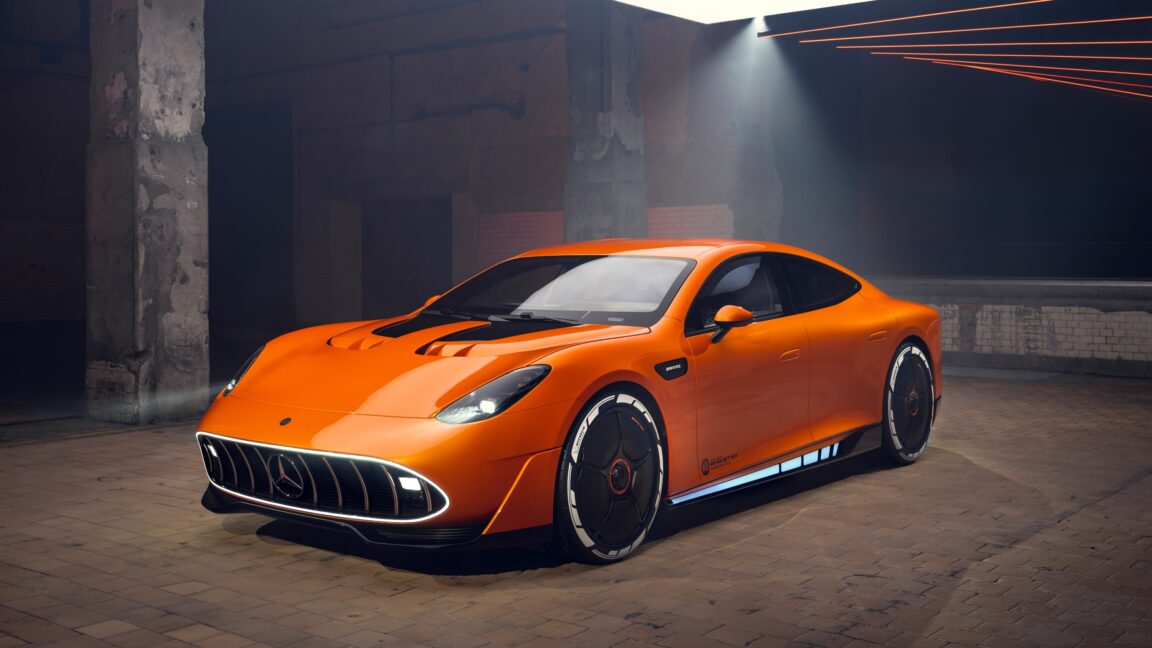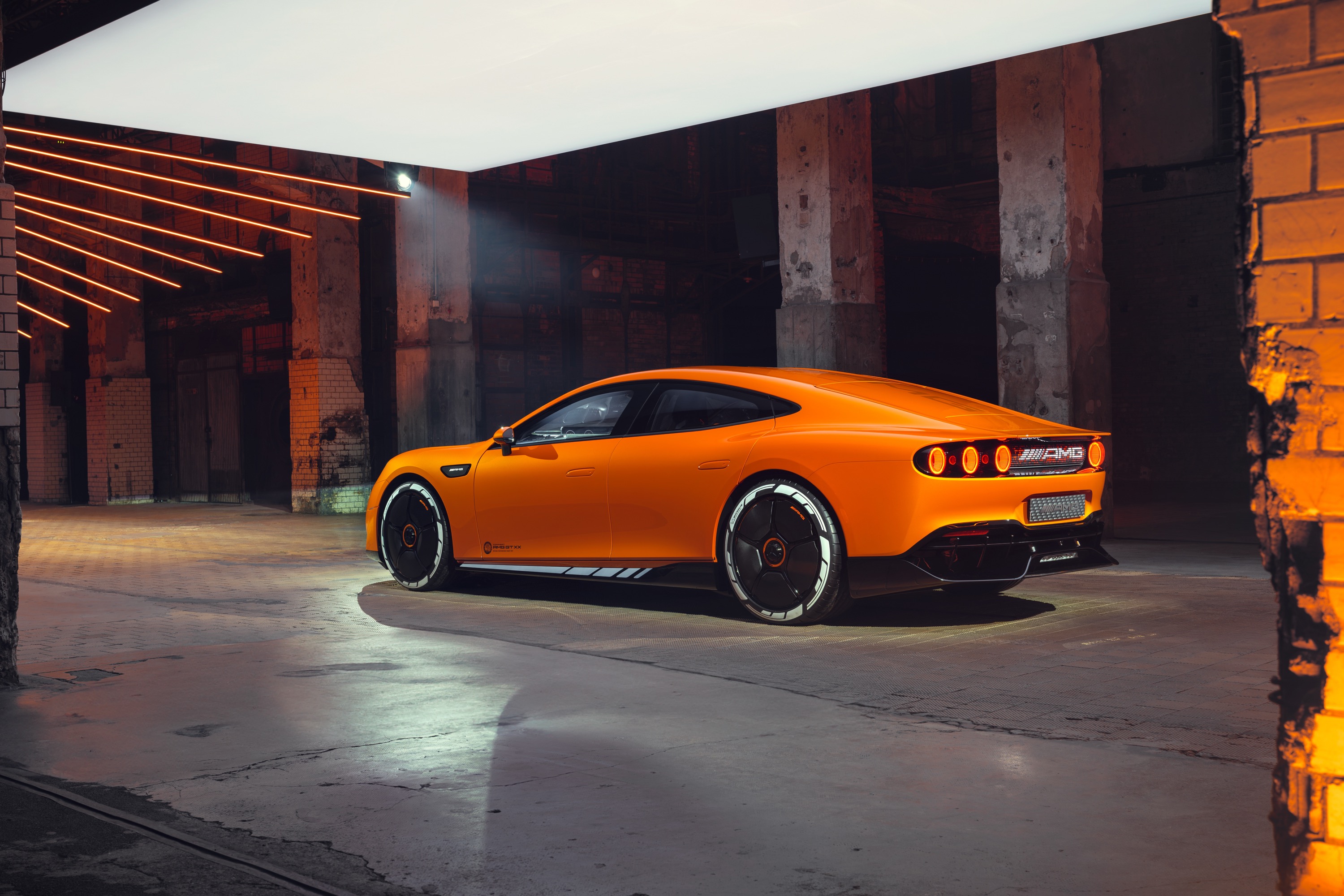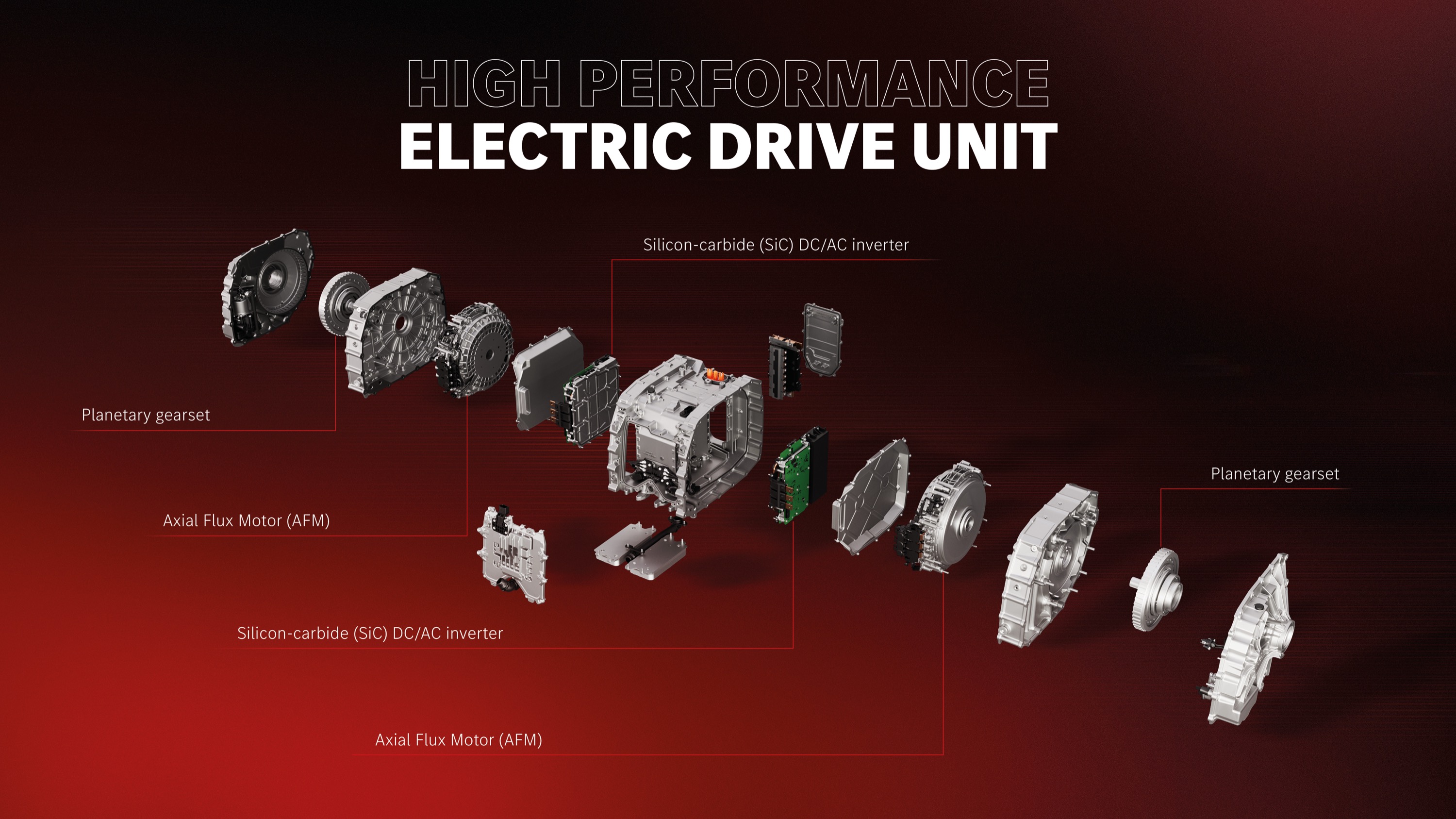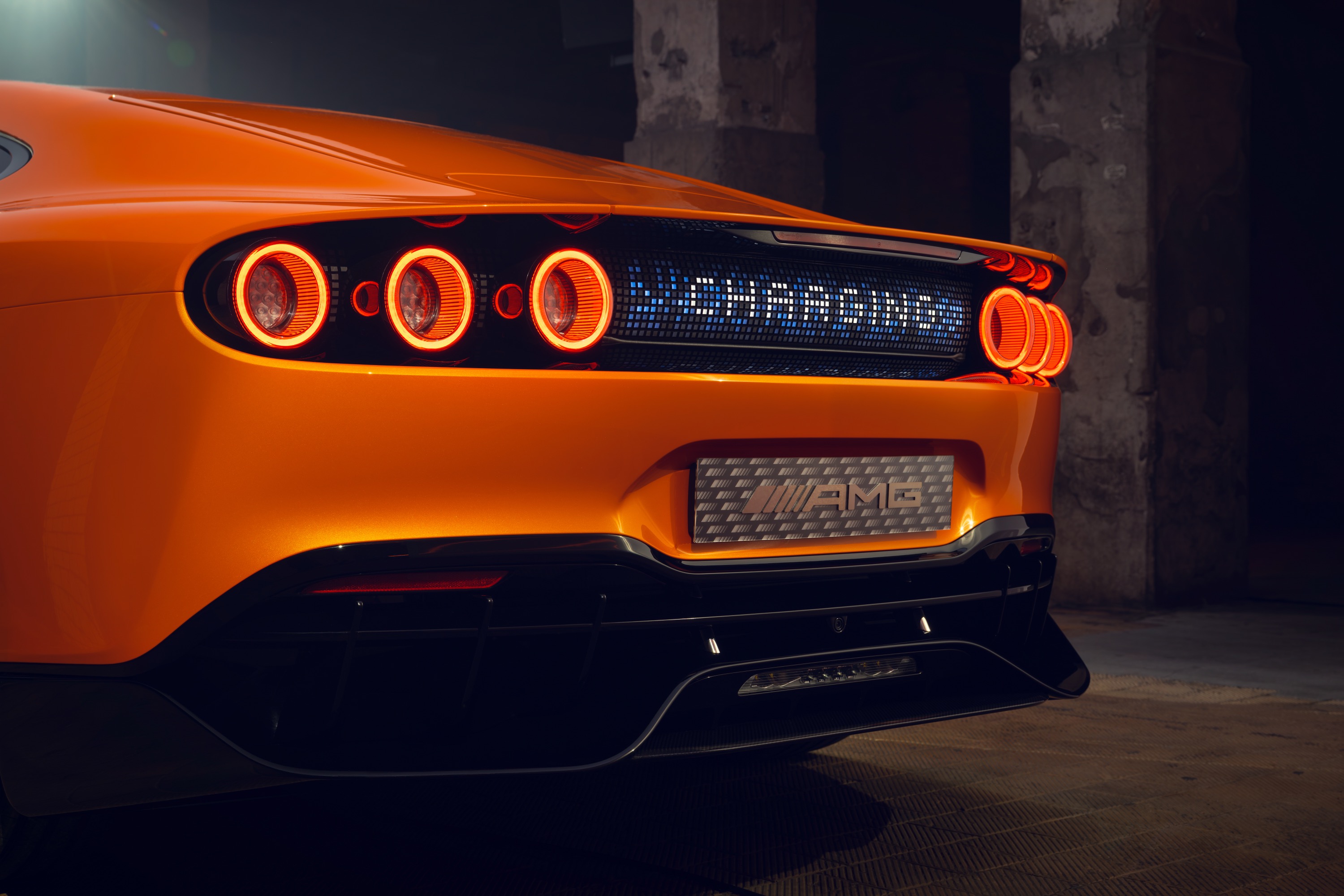
Credit: Mercedes-AMG
AFFALTERBACH, Germany—A few years ago, we were treated to the Mercedes-Benz EQXX. It was, at the time, the pinnacle of Mercedes engineering built for the purpose of maximum electric range. While an impressive piece of machinery that looked like it drove out of Le Mans, it wasn't designed to be a high-performance electric vehicle with an AMG badge. That's ok, though, because there is a high-performance AMG electric concept, called the GT XX, that introduces the world to the future of high-performance AMG electrics and debuts the AMG.EA architecture.
The 800 V AMG.EA isn't like an 800-volt you've experienced before. Mercedes claims that the car can charge at greater than 850 kW over a wide portion of the charging session. While the company didn't provide any graphs, based on the hardware onboard, there's little reason to doubt that claim.
To feed an EV that much power, the charging station would need to output at 1,000 A, and the company worked with its European partner Alpitronic to develop a prototype charging station. The current prototype uses a CCS connector, which is the standard in Europe.
If you were using the prototype charger, or using another location that could deliver peak performance (which doesn't currently exist), you could add 400 kilometers (249 miles) of WLTP in approximately five minutes connected to that charger.

The EQXX looked like a Le Mans car; the GT XX can perform like one.
Credit: Mercedes-AMG
That's thanks to a new battery pack for AMG.EA that uses nickel/cobalt/manganese/aluminum (NCMA) in the cathode and silicon content in the anode. The cylindrical cells are taller and narrower than in a more traditional pack. These cells have a smaller diameter—which makes heat dissipation quicker and allows for Mercedes engineers to use direct-cell cooling technology.
A non-conductive oil flows between the cells in the pack, following through coolant channels to rapidly expel the unwanted heat. Not only does this help regulate temperature for on-track consistency, it also allows the vehicle to charge at such a rapid rate and then return immediately to the track without a loss of performance.
The pack in the GT XX concept has 3,000 cells, giving the pack an energy density of 300 Wh/kg. The company, in addition to claiming quick recharging and optimal on-track performance, states that the design should also improve overall battery longevity.

An infographic showing an exploded view of the AMG electric drive unit.
Credit: Mercedes-AMG
The battery pack is a structural element of the vehicle and houses not just the cells but also all switch components and the battery management system. We've seen this skateboard design with the battery being a structural element before, and it typically performs well in crash testing.
In the GT XX, the power is sent from the battery pack to three motors packaged as two high-performance drive units. The front unit has a single motor, while the one in the rear has two. Math! Unlike pedestrian radial flux motors, the AMG.EA setup in the GT XX uses axial flux motors.
What are they? They are motors designed for the electromagnetic flux to run parallel to the motor's axis of rotation. The large components in the motor are shaped like slim discs, and the stator is positioned between the two rotors.
The motor and gearsets are packaged together, with the rear combined drive unit doing most of the forward momentum. The front drive unit helps acceleration, of course, and is also used during regeneration to send recuperated power back into the pack.
In the real world, this axial flux setup is more compact, more efficient, more powerful, and much lighter. On that last part, we're talking 67 percent lighter than a radial flux configuration. The motors are manufactured in-house at Mercedes at a facility in Berlin.

A display panel between the rear lights can communicate with humans.
Credit: Mercedes-AMG
What's key to all of this is the innovation that Mercedes is performing with components that are tried and tested. The company isn't using mythical manufacturing techniques or some futuristic battery technologies. Yes, the axial flux motor production includes 35 world-firsts, but it's also something that can easily be adapted to a real road car and not just this concept.
That's the thing: This platform is heading into AMG production cars, likely sooner rather than later, because even though Mercedes-AMG incorporates a multi-powertrain approach to its vehicles, the company is still powering ahead with fully electric offerings.
Battery electrics are the future of AMG, and it fits into the ethos of what AMG is. Mercedes-AMG CEO Michael Schiebe told Ars in an interview that AMG means power. "It should feel like the power you've felt in an AMG V8 so far," Schiebe said. "It's all about continuous performance. You shouldn't feel any kind of limits here."
It's easy to make an electric vehicle accelerate quickly, but it's far more difficult to make that performance continuous. Teslas tend to be less effective at delivering lap after lap performance. Hyundai's Ioniq 5 N has a battery endurance mode for those long lapping sessions. On the higher end, Porsche's Taycan was engineered with some track use in mind. For AMG.EA, the goal is to have the owner hit the track, recharge as often as necessary, and drive it home without any compromise.
It's also important to Schiebe that electric AMGs deliver on emotion. "You can go from A to B cheaper [than an AMG]," Schiebe says. "If you decide to go AMG, you want to do it in style." He's also convinced that these upcoming products will convince petrolheads. "I'm super confident," he tells me. "I mean really super, super confident."
Other powertrains aren't going away. Schiebe's goal is to deliver products that work in each market, with the tastes of those markets in mind. That will include more hybrids and even more V8s. But that doesn't stop the company from working on making high-performance electrics, and AMG.EA is the next step in that process.
Two production cars have already been confirmed to come with this new architecture, including one SUV. While the platform has debuted on a concept, expect to learn more about those production offerings soon.

-
 C114 Communication Network
C114 Communication Network -
 Communication Home
Communication Home


